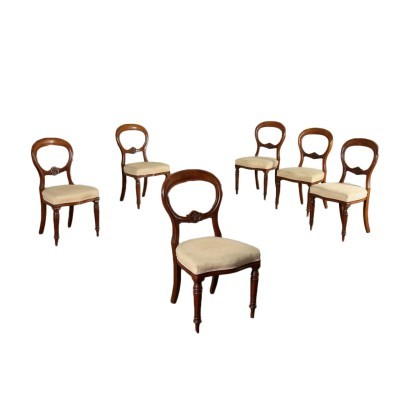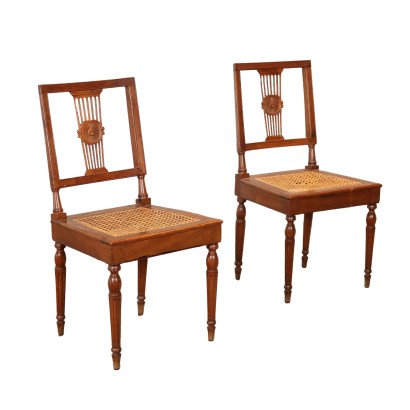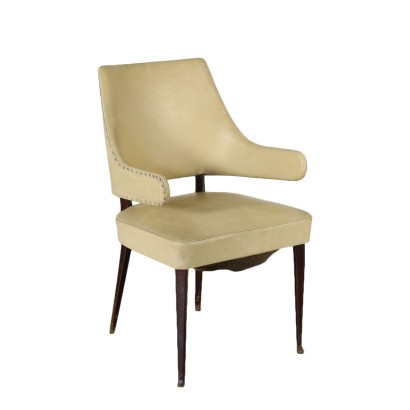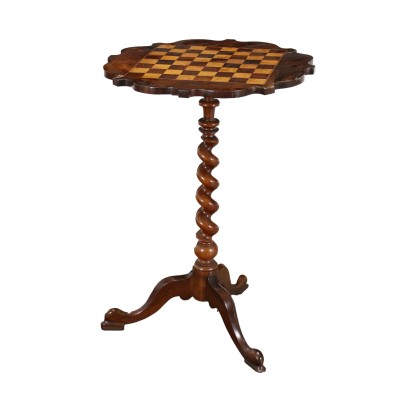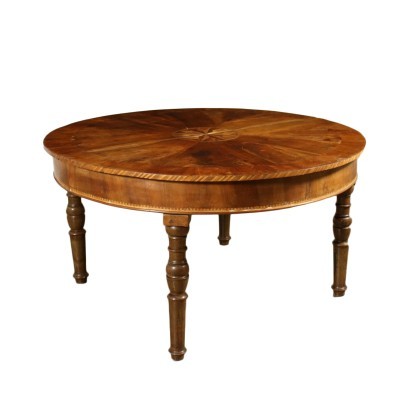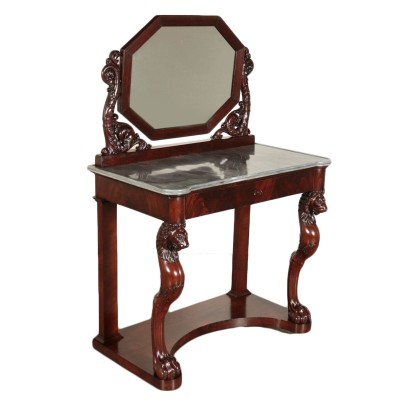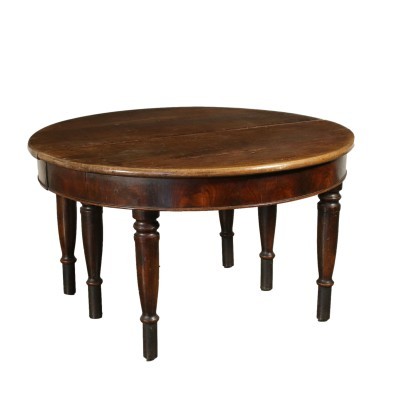Group of 6 Victorian Chairs Mahogany Beech - England XIX Century
Features
Style: Victorian (1830-1900)
Age: 19th Century / 1801 - 1900
Origin: England
Main essence: Beech , Mahogany
Material: Padded
Description
Group of six Victorian English chairs, supported by legs of which the rear ones are saber and the front ones are turned, the seat is padded, while the open back has a band with a carved rosette. In mahogany, the construction part is in beech; under the seat there is the label “Mr. Leach Upholstery [...] ".
Product Condition:
Product that due to age and wear requires restoration and resumption of polishing.
Dimensions (cm):
Height: 90,5
Width: 48
Depth: 55
Seat height: 46
Additional Information
Style: Victorian (1830-1900)
This refers to one of the predominant styles used during the Victorian era.
Like the latter, it roughly refers to the duration of the reign of Queen Victoria (20 June 1837 - 22 January 1901), from which it took its name.
Characterized by a great expansion of the home furnishing market and by new mechanized production possibilities, but not by great aesthetic innovations, but by the revival of stylistic elements from various previous eras.
Find out more about the Victorian style with our insights:
Writing desk, Arthur Blain, Liverpool c. 1840
Age: 19th Century / 1801 - 1900
19th Century / 1801 - 1900 Main essence:
Beech
It is a semi-hard wood which, unfortunately, is easily wormed, therefore it is considered poor. Due to its light but variegated shades, from blond to reddish, it was nevertheless appreciated by French cabinetmakers. It was mainly used for furniture structures or, as an alternative to walnut, by provincial English furniture makers for popular works, mostly in the 1700s. The noblest use is due to Thonèt, who applied the steam bending of the beech in the making of the furniture, in particular for the chairs that took his name.
Mahogany
It is one of the most precious and sought-after woods in cabinet making. It was discovered in Central America around 1600 and began to be imported to England in the 1700s. Much appreciated for its hardness and indestructibility, it became widespread following the blocking of walnut exports from France in 1720 and the consequent elimination of English import duties on mahogany from the colonies in America and India. The most valuable version comes from Cuba, but it became very expensive. At the end of the 18th century it began to be used also in France in Louis XVI, Directory and Empire furniture, its diffusion declined starting from when Napoleon, in 1810, forbade its import. It was generally used in the manufacture of elegant furniture, due to its characteristics and beautiful grain.
Material: Padded



